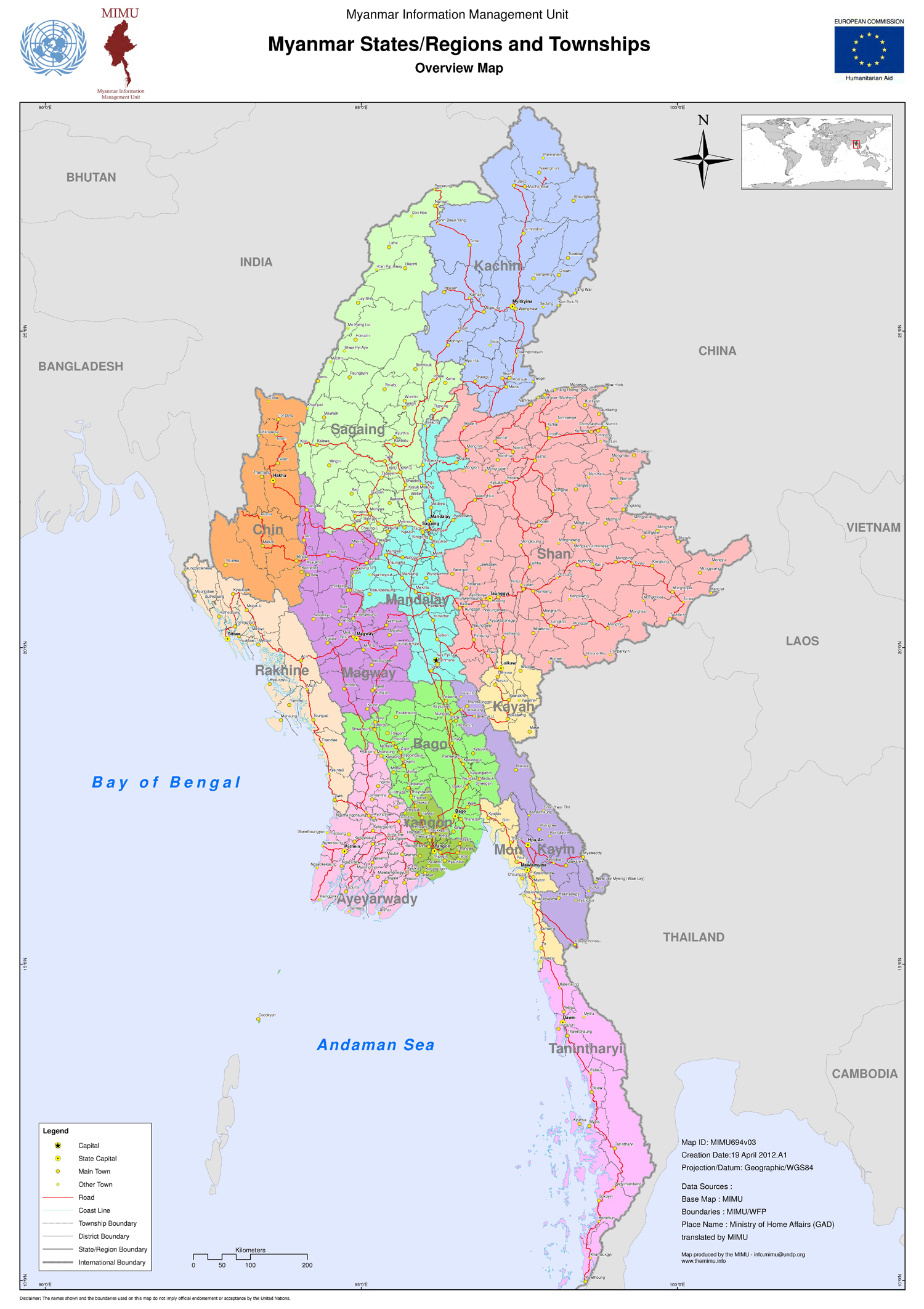FAQ
Q. How big is Burma/Myanmar and where is it located?
A. Burma/Myanmar occupies the mainland South East Asia and shares international borders with China in the north, India in the west and Thailand in the east. The country has a population of 51,419,420 (Census 2014).
Q. What is the difference between Burma, Burman and Burmese?
A. Here is a very brief explanation of technical terms and the usage of the ethnic names of Burma/Myanmar. Burma (or Myanmar) is a country name, whereas Burman or Bama refers to one of the ethnic groups of Burma, a majority ethnic group. Chin, Kachin, Shan, Karenni (or Kayar), Karen, Mon, Arakan (or Rakhaine), Bama (or Burman)—these terms represent eight major ethnic groups of Burma.
The term “Burmese” usually refers to, or technically and simply means, either the people from Burma or the origin language of the Burman ethnic group, or the language commonly spoken by the people of the country.
The term “Burmese” usually refers to, or technically and simply means, either the people from Burma or the origin language of the Burman ethnic group, or the language commonly spoken by the people of the country.
Q. Should it be Burma or Myanmar?
A. The past repressive military regime in the country changed its name from Burma to Myanmar in 1989, which is the year after the ’88 nationwide uprising when peaceful protesters were brutally responded to and thousands were killed.
The country is known as Myanmar in many countries around the world and recognized at the United Nations. However, along with the democratic forces, the West, specifically the US and the UK, does not recognize the legitimacy of the change of name. They therefore officially use “Burma” up to the present. The EU officially uses the name Burma/Myanmar.
Q. Will a new government led by the NLD change the name back to Burma?
A. Assuming the main reason for the use of “Burma” after it has been changed is political and for legitimacy, reasons which are reasonably accurate, rather than its technicality or meaning—and weighing all other factors—it is highly likely that Daw Aung San Suu Kyi and her party NLD will opt to endorse the name Myanmar. However, the eventual development with respect to the name Burma/Myanmar is something to be observed in 2016 and beyond.
Q. Who is a refugee?
A. A person who, owing to a well-founded fear of being persecuted for reasons of race, religion, nationality, membership of a particular social group or political opinion, is outside the country of his nationality and is unable or, owing to such fear, is unwilling to avail himself of the protection of that country; or who, not having a nationality and being outside the country of his former habitual residence as a result of such events, is unable or, owing to such fear, is unwilling to return to it (The 1951 UN Convention).

